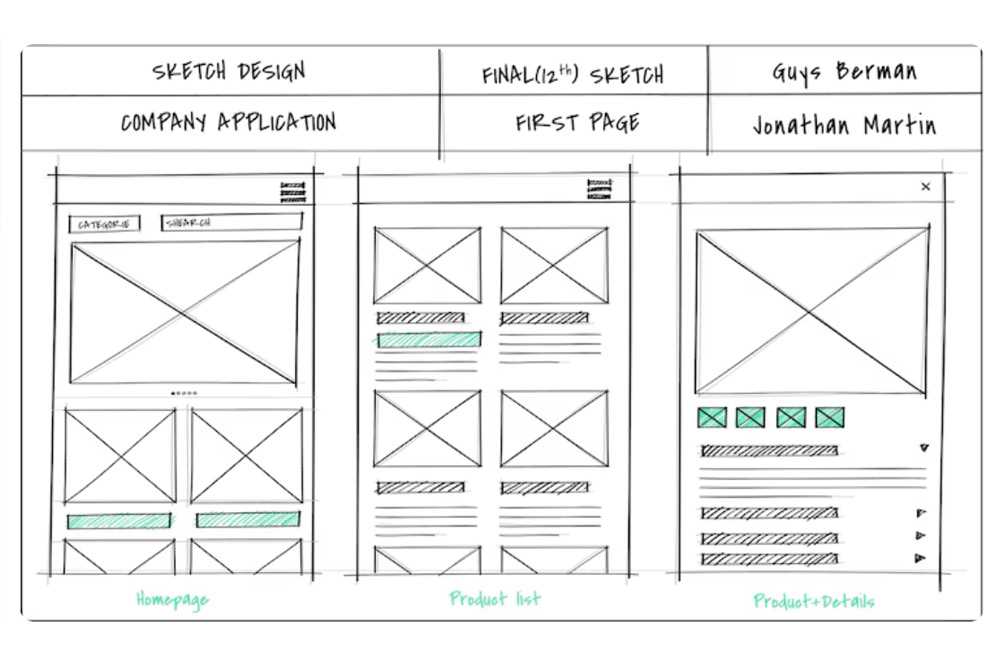Before developing a website, a clear structure is essential. With wireframes and mockups, you can visualize layout, navigation, and content before actual design and coding begin. This saves time, reduces costs, and ensures a better user experience. Thoughtful pre-planning prevents errors and misunderstandings during development. Especially in larger projects, this method provides a consistent foundation for all stakeholders – designers, developers, and clients. The main advantage is the clear visualization that shows early on how users will navigate the site.
What are Wireframes?
Wireframes are schematic website drafts showing only the basic structure and element arrangement. They help plan layout, hierarchy, and navigation without getting caught up in colors, typography, or design details. A wireframe is essentially the foundation of a website, comparable to an architectural blueprint. This allows early detection of errors, inefficient paths, or unclear structures. Wireframes are ideal for quickly testing multiple page variants, offering maximum flexibility and perfect conditions for feedback loops.
What are Mockups?
Mockups are more detailed visual representations that realistically simulate the final design. Colors, fonts, images, and buttons are included, giving stakeholders a clear impression of the finished website. Mockups are important to show the look and feel before actual development costs occur. Clients can make decisions and request changes faster. Additionally, mockups are a helpful presentation tool to effectively communicate design ideas and identify usability aspects early, such as sufficient contrast or visible buttons.
Benefits of Wireframes and Mockups
- Visualizing page structure before development to avoid misunderstandings.
- Early testing of user flow and navigation before time is invested in design or code.
- Reduction of changes and costs during development through clearly defined processes.
- Better coordination between designer, developer, and clients, since everyone sees the same foundation.
- Clear basis for responsive design and mobile optimization as layouts can be tested beforehand.
Best Practices
- Start with low-fidelity wireframes to quickly capture ideas visually.
- Progress to high-fidelity wireframes or mockups when details like colors and typography need review.
- Incorporate user feedback early to identify usability issues in time.
- Use tools like Figma, Adobe XD, Sketch, or Balsamiq depending on project scope and team size.
- Plan content and user journey within the wireframe to prevent later design errors.
Conclusion
Planning website structure with wireframes and mockups is an essential step for efficient web design. It enables thoughtful user flow, reduces development errors, and ensures clear communication among all parties. Wireframes provide structure – mockups provide clarity. Together, they ensure design, usability, and technology harmoniously work together. At aurelix, I use both tools to create websites that are not only functional but also aesthetically impressive.
Image: freepik.com

